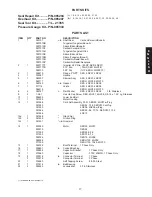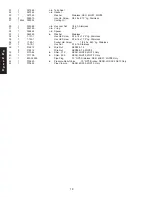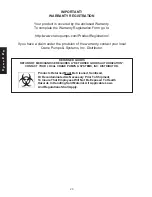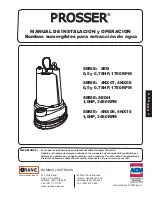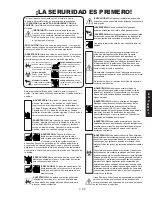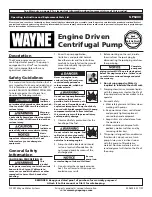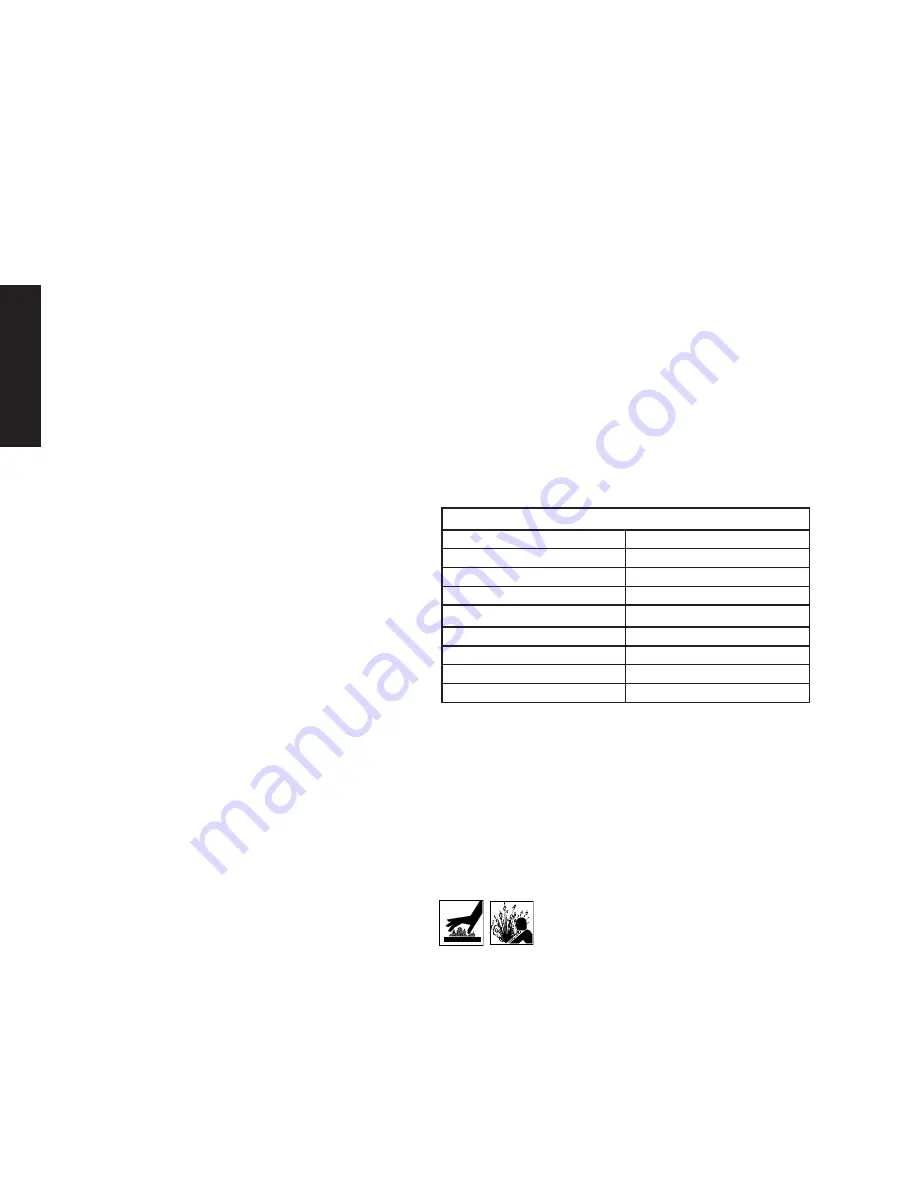
8
D-2.2) Incorrect Rotation for Single-Phase Pumps:
In the unlikely event that the rotation is incorrect for a single
phase pump, contact a Prosser Service Center.
D-3) Start-Up Report:
Included at the end of this manual is a start-up report sheet,
this sheet is to be completed as applicable. Return one copy
to Barnes and store the second in the control panel or with
the pump manual if no control panel is used. It is important to
record this data at initial start-up since it will be useful to refer
to should servicing the pump be required in the future.
D-3.1) Identifi cation Plate:
Record the numbers from the pump identifi cation plate on
both START-UP REPORTS provided at the end of the manual
for future reference.
D-3.2) Insulation Test:
Before the pump is put into service, an insulation (megger)
test should be performed on the motor. The resistance values
(ohms) as well as the voltage (volts) and current (amps)
should be recorded on the start-up report.
D-3.3) Pump-Down Test:
After the pump has been properly wired and lowered into the
basin, sump or lift station, it is advisable to check the system
by fi lling with liquid and allowing the pump to operate through
its pumping cycle. The time needed to empty the system, or
pump-down time along with the volume of water, should be
recorded on the start-up report.
SECTION E: PREVENTATIVE MAINTENANCE
As the motor is oil fi lled, no lubrication or other maintenance
is required, and generally will give very reliable service and
can be expected to operate for years on normal sewage
pumping without failing. However as with any mechanical
piece of equipment a preventive maintenance program is
recommended and suggested to include the following checks:
1) Inspect motor chamber for oil level and contamination and
repair as required per section F-1.
2) Inspect impeller and body for excessive build-up or
clogging and repair as required per section F-2.
3) Inspect motor, bearings and shaft seal for wear or
leakage, replace as required per section F-3.
4) Before stopping operation, be sure to keep pumping
supernatent water or clean water for a period of time
to fl ush out accumulated substances from pump.
SECTION F: SERVICE AND REPAIR
NOTE:
All item numbers in ( ) refer to Figures 8, 9 & 10.
F-1) Lubrication:
Anytime the pump is removed from operation, the cooling oil
in the motor housing (11) should be checked visually for oil
level and contamination.
F-1.1) Checking Oil:
Motor Housing
- To check oil, set unit upright. Remove pipe
plug (41) on SED series, or Pressure valve (42) on SEDH
series, from motor housing (11) With a fl ashlight, visually
inspect the oil in the motor housing (11) to make sure it is
clean, clear, light amber in color and free from suspended
particles. Milky white oil indicates the presence of water. Oil
level should be to the midpoint of capacitor (18) on single
phase units and above motor on three phase units, see Fig. 8
or 9, when pump is in vertical position.
F-1.2) Testing Oil:
1. Place pump on it’s side, remove pipe plug (41) or (42),
from motor housing (11) and drain oil into a clean, dry
container.
2. Check oil for contamination using an oil tester with a
range to 30 Kilovolts breakdown.
3. If oil is found to be clean and uncontaminated (measure
above 15 KV. breakdown), refi ll the motor housing as per
section
F-1.3.
4. If oil is found to be dirty or contaminated (or measures
below 15 KV. breakdown), the the pump must be carefully
inspected for leaks at the shaft seal (1), Gland Nut (12b),
O-rings (23), pipe plug (41) or pressure valve (42) before
refi lling with oil. To locate the leak, perform a pressure
test as per section F-1.4. After leak is repaired, refi ll with
new oil as per section F-1.3.
TABLE 1 - COOLING OIL - Dielectric
SUPPLIER
GRADE
BP
Enerpar SE100
Conoco
Pale Paraffi n 22
Mobile
D.T.E. Oil Light
G & G Oil
Circulating 22
Imperial Oil
Voltesso-35
Shell Canada
Transformer-10
Texaco
Diala-Oil-AX
Woco
Premium 100
F-1.3) Replacing Oil:
Motor Housing- Drain all oil from motor housing and dispose
of properly. Refi ll with (see parts list for amount) new cooling
oil as per Table 1. An air space must remain in the top of
the motor housing to compensate for oil expansion (see
Cross-sections Fig. 8 or 9). Set unit upright and fi ll only
until the motor, as viewed through the pipe plug opening, is
just covered and no more. Apply pipe thread compound to
threads of pipe plug (41) or pressure valve (42) and install in
motor housing (11).
WARNING ! - DO NOT overfi ll oil.
Overfi lling of motor housing with oil can
create excessive and dangerous hydraulic
pressure which can destroy the pump
and create a hazard. Overfi lling oil voids
warranty.
F-1.4) Pressure Test:
Motor Housing
- Before checking the pump for leaks around
the shaft seal, square rings, and cord inlet, the oil level should
be full as described in section F-1.3. Remove pipe plug (41)
or pressure valve (42) from motor housing (11).
E
N
G
L
I
S
H
Summary of Contents for PROSSER 4NX07 Series
Page 14: ...14 FIGURE 8 Series SED 4NX07 4NX08 E N G L I S H ...
Page 15: ...15 FIGURE 9 Series SEDH 4NX09 4NX10 E N G L I S H ...
Page 16: ...16 FIGURE 10 SEDH Series 4NX09 4NX10 SED Series 4NX07 4NX08 Series SED SEDH 4NX E N G L I S H ...
Page 35: ...15 SP E S P A Ñ O L FIGURA 8 Serie SED 4NX07 4NX08 ...
Page 36: ...16 SP E S P A Ñ O L FIGURA 9 Serie SEDH 4NX09 4NX10 ...
Page 42: ...E S P A Ñ O L ...

















